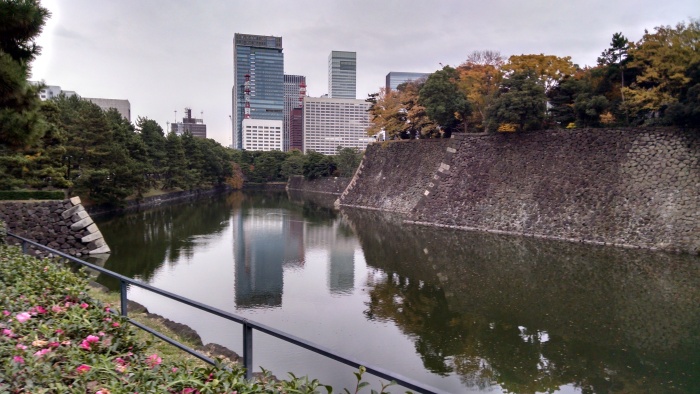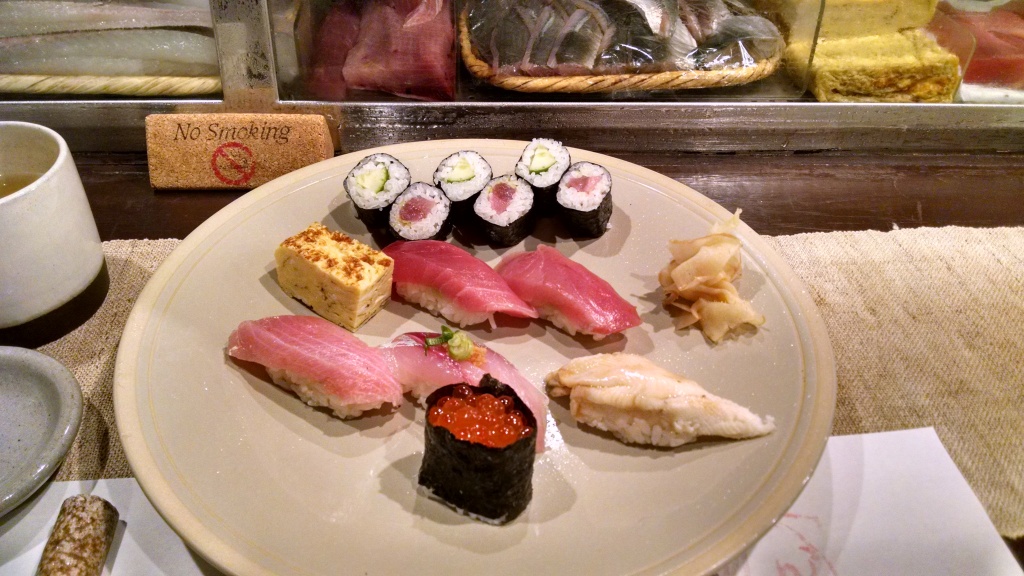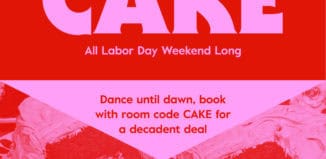By Andrew Collins
As one of the world’s trendsetting meccas for everything from high-tech gadgetry to club fashion to skyscraper architecture, Tokyo commands a visitor’s interest like few other cities. Aesthetically disjointed and boldly receptive to both rapid growth and new styles—the city was virtually rebuilt following the 1923 Great Earthquake and the devastating bombings of World War II—it’s the sort of place that feels more engrossing the longer, and more deeply, you explore it. It’s defined not by one primary district or iconic attraction but rather a series of distinctive, eclectic neighborhoods that sprawl across 845 square miles. For a city of more than 13 million inhabitants, Tokyo is surprisingly accessible—the city’s user-friendly metro system, remarkably polite denizens, and relatively sane traffic make for a highly rewarding visit, and direct flights are available from more than 20 North American cities (including Houston and Dallas). Gay culture is more on the down-low than in the West (as are public displays of affection—of any gender pairing), but outward homophobia virtually unheard of. Furthermore, forget everything you may have heard about the once exorbitant cost of visiting: owing to a weak yen and a prolonged recession, there’s hasn’t been a more affordable time to visit in decades.
Eat
One of the world’s undisputed culinary capitals, Tokyo can feel a bit intimidating to food-foraging newcomers. Etiquette concerning everything from chopsticks to table napkins can be confusing, and dining at some of the city’s best eateries entails ordering ramen from automated ticket machines, or navigating pictorial menus with nary a word of English on them (although, as you might expect, English menus are increasingly common in Tokyo’s more touristic quarters). The recommendations here are all foreigner-friendly, but don’t be afraid to venture out of your comfort zone—a self-deprecating smile and a few words of Japanese go a long way, and service is consistently polite at most restaurants in this bustling city.
The top sushi restaurants in Tokyo—much-hyped places like Saito, Mizutani, and Sukiyabashi Jiro (as in Jiro Dreams of Sushi)—can be impossibly crowded and, in many cases, very expensive. Located on an unassuming side street in trendy Shibuya, Sushi Ouchi (no web, 2-8-4 Shibuya, 03-3407-3543) is an exception, scoring high marks for artful presentation, laid-back ambience, fair prices, and superior quality. Chef Hisashi Ouchi uses only wild-caught seafood, organic rice, and free-range eggs. This intimate, rustic space is filled with antiques, traditional textiles, and hand-crafted bowls and plates. A few blocks away near stately, tree-lined Omotesando—sometimes referred to as the Champs-Élysées of Tokyo—Coutume Aoyama is a chic, Paris-based coffee bar with a gleaming white-on-white interior. This first Japan branch opened in spring 2014 and has quickly become revered among discerning javaficionados for its top-quality, single-origin pour-over coffees and flaky French pastries.
Japan’s long-revered breweries—Sapporo, Asahi, Kirin, Suntory—still turn out first-rate products. Best of all, you can buy them at any hour from the ubiquitous “liquor shop” vending machines located throughout the city. But lately, the country has begun a fervent embrace of craft beer, with Ohio native and talented brewer Bryan Baird helping lead the movement. You can sample his superb brews (try the light and hoppy Rising Sun Pale Ale or deeply rich Kurofune Porter) at Baird Taproom, in Harajuku, a neighborhood much identified for its outré style fashion scene (remember Gwen Stefani’s Harajuku Girls?). The taproom is also a terrific izakaya, where you can tuck into plates of gyoza, yakitori, and other tasty bar bites.
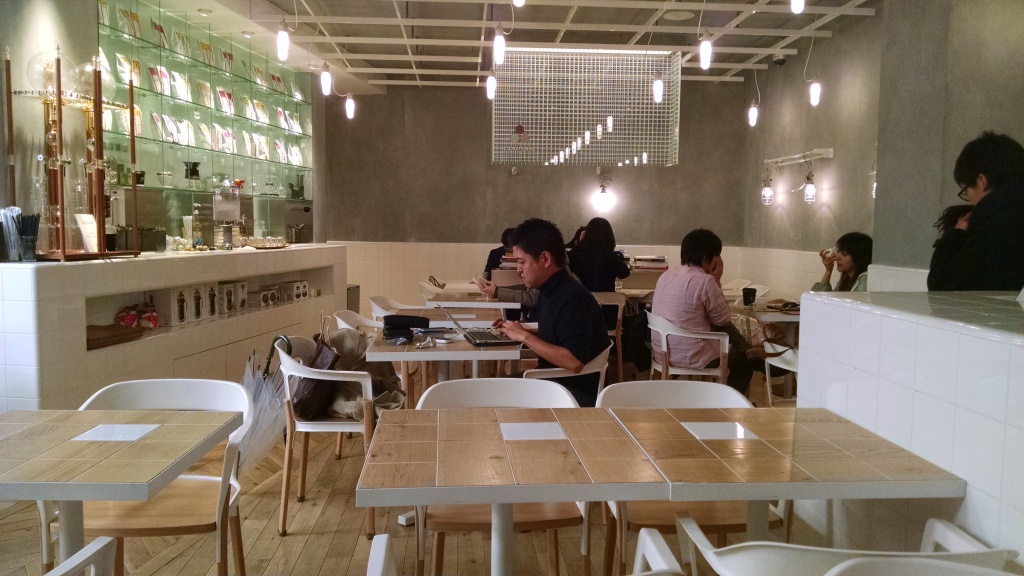
Coutume Aoyama – photo by Andrew Collins
One of Tokyo’s most engaging and traditional neighborhoods, Asakusa lies to the northeast of the city center and is well-worth a look for its covered pedestrian-only streets lined with boutiques and cafes, historic temples, and traditionally clad geisha. It’s also home to an affordable (cash-only) and refreshingly untrendy tempura restaurant, Daikokuya, which occupies an old house just opposite the colorful Kaminari Gate, which leads into the leafy grounds of the venerable Senso-ji Buddhist temple. Set-price dinners consist of lightly battered vegetables and giant prawns. The food is hearty and reliably good, but the main draw is the location and old-school ambience, which provides a nice alternative to the relentlessly trendy and modern buzz of Shibuya, Shinjuku, and Ginza. While in Asakusa, be sure to stop inside Don Quijote, a popular branch of the Tokyo-based discount department—this six-story sensory overload of cheap athletic apparel, underwear, cosmetics, electronics, liquor, and sex toys is a fun place to shop for odd souvenirs, from superhero-themed toilet paper to Hello Kitty styling gel.
Do
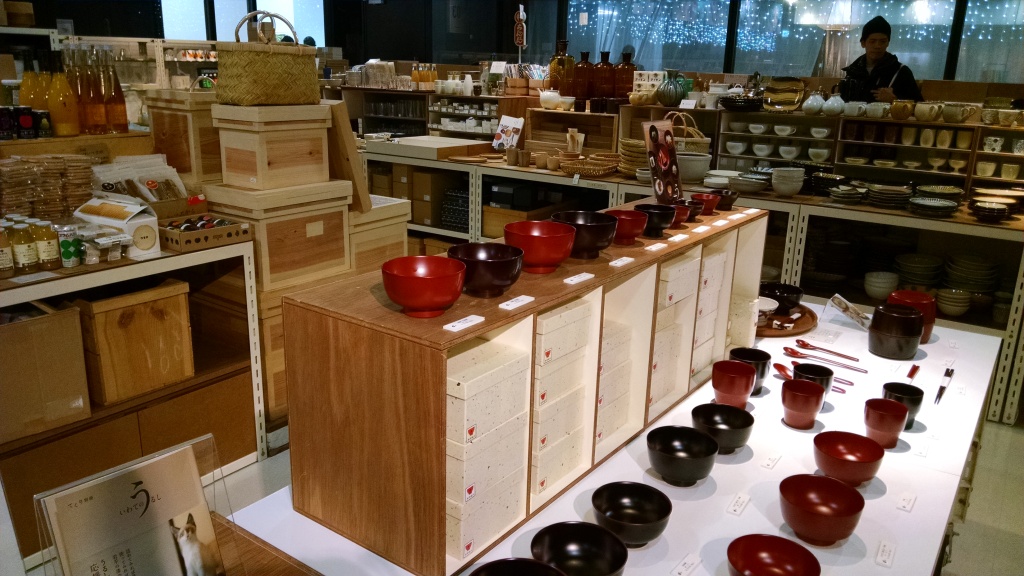
The d47 Design Travel Store in the Hikarie Shopping Center – photo by Andrew Collins
Opened in spring 2012, 43-story Shibuya Hikarie combines Tokyo’s penchant for sleek skyscrapers, one-of-a-kind retail, and fashionable people-watching. It’s in the heart of one of Tokyo’s most ebulliently modern neighborhoods, with its massive lighted billboards, contemporary office towers, and swanky department stores. The lower 11 floors are fronted by a dramatic glass curtain wall that allows mesmerizing views of the circus-like street life below, and inside you will discover an intriguing mix of shops and eateries, with different floors specializing in particular themes (specialty foods, beauty, fashion, lifestyle goods). You’ll find a good range of international chains and local brands, and the sixth and seventh levels house a warren of rather sceney restaurants specializing in everything from small-bites izakaya fare to udon noodle bowls. The must-see floor in the Hikarie is the eighth, dubbed “Creative Space 8”, where you’ll find d47, an all-in-one travel store, gallery, and restaurant—the latter serves outstanding regional Japanese fare and overlooks Shibuya Crossing (think Times Square…on steroids). This design-driven lifestyle company stocks beautiful tableware and home accessories, contemporary artwork, and artisan foods and beverages representing each of Japan’s 47 prefectures (loosely comparable to U.S. states). The surrounding West Tokyo districts of Harajuku and Aoyama—hubs of fashion and retail—are within easy walking distance.
Explore
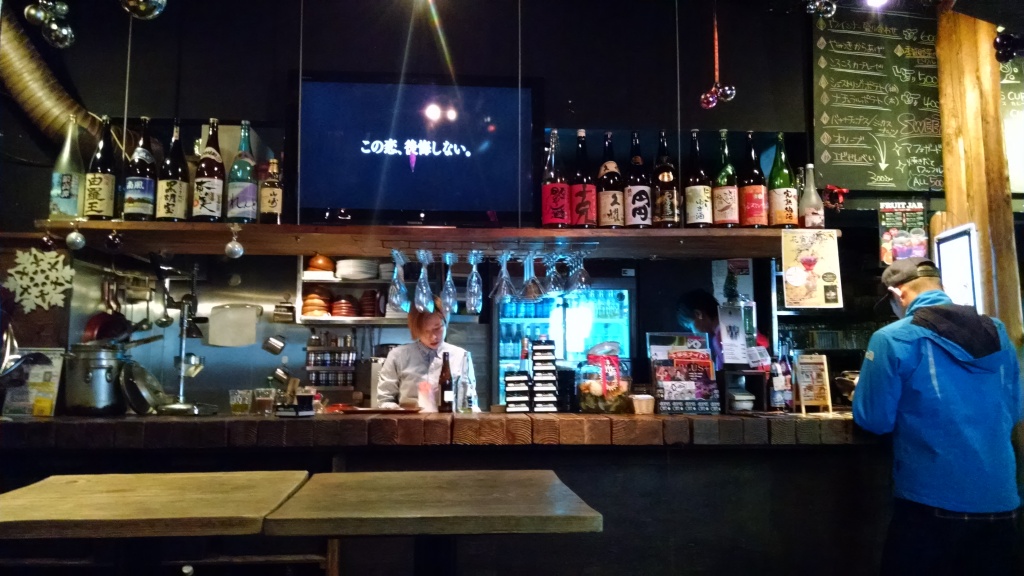
Aramas Cafe, one of the more inviting gay bars in Shinjuku Ni-Chome by Andrew Collins
If you’re of the mind that once you’ve seen one gay nightlife district, you’ve seen them all, you owe it to yourself to spend an evening wandering through Shinjuku Ni-Chome. It is a densely developed—to put it mildly—quadrant on the eastern edge of one of the city’s liveliest neighborhoods, Shinjuku. As you amble around the small gay quarter in Ni-Chome (pronounced nee-cho-may), you’ll see brightly lit signs—most in Japanese but many in English, too—outside the scores of compact queer bars, many of them in nondescript five- and six-story buildings with multiple venues on every floor. Aficionados of Tokyo’s gay scene estimate that as many as 300 bars, saunas, sex shops, cafes, and other LGBT establishments thrive in Ni-Chome, but that number has supposedly dwindled considerably in recent years, thanks to gentrification brought on in part by the construction of the relatively new Fukutoshin metro line. Gay bars here are notoriously specialized and cliquey, and outsiders—especially Westerners—would be wise to kick off a night of bar-crawling by dropping by a few reliably welcoming spots. The following bars, all of them with easy-to-find street-level entrances, friendly bartenders, and a fairly mixed male-female crowd, are good bets: Advocates, which is also a nice place to eat; Agit, a popular lesbian bar; Alamas Café, a cozy spot with no cover charge; and Paddy’s Junction, a fave of expats.
Stay
Movie buffs may recognize the awesome skyline views afforded by the Tokyo Park Hyatt—Bill Murray and Scarlett Johansson spent a good part of Sofia Coppola’s wryly moody Lost in Translation gazing wistfully out the hotel’s giant windows. This luxe lodging in bustling Shinjuku does claim some of the coolest rooms in the city—studies in contemporary grace outfitted with wet bars and deep soaking tubs, making them perfect for entertaining your own high-rise hijinks. Don’t fret if you end up with a room facing west, away from the city center,–on clear days you’ll instead be treated to a view of snow-capped Mt. Fuji. Even if you don’t stay here, try to stop by the top-floor New York Bar—it’s worth the nearly 2,200 JPY ($18.50) cover charge to soak up the atmosphere and enjoy the nightly jazz performances.
Although it’s a 20-minute subway ride from the glamour of Shinjuku and Shibuya, the understatedly stylish, moderately priced Hotel Niwa Tokyo makes an outstanding base camp for exploring the entire city. It’s in the northern edge of the central Chiyoda district, within easy walking distance of the Imperial Palace and its adjacent museums, leafy Ueno Park and the city zoo, and plenty of other key attractions. Rooms are compact but light-filled, the staff is gracious and helpful, and there’s a very nice ground-floor restaurant, a relaxing lounge that opens to a peaceful garden terrace, and a small but well-equipped gym. If you’re simply seeking a shoestring-budget-friendly option with a great location steps from gay bars, the Shinjuku CityHotel Lonestar is a perfectly comfortable and safe option—the compact but pleasant contemporary rooms in this modern mid-rise start around $60.
More on Tokyo at http://gotokyo.org/en/.
Like this story and would like to read more?
Sign up for our weekly newsletter for our newest stories, events and tons of great giveaways!


















